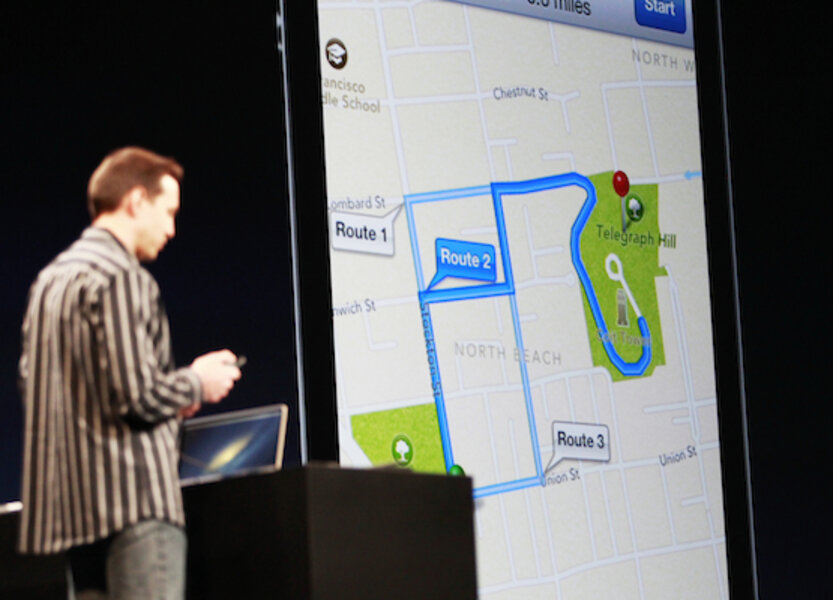Apple iOS 6: 3-D maps, more Siri, and a digital Do Not Disturb sign
Loading...
This week, at the annual WWDC conference, Apple took the wraps off iOS 6, the latest iteration of its mobile operating system. iOS 6 brings with it a range of upgrades and new features, including expanded Siri functionality – to the iPad, and one day, even to the car – and increased Facebook integration. So how does it compare to past versions of iOS?
Pretty well, according to a range of hands-on tests published this week. Over at Gizmodo, for instance, Sam Biddle highlights the new FaceTime, which is now accessible through both Wi-Fi and 3G. (In iOS 5, you needed a Wi-Fi connection.)
"It took a couple years, but now FaceTime is as fantastic as it could have been all along: make video calls from anywhere you have a cell signal," writes Biddle. "It'll kick your capped data plan in the shins if you have one, but we can report the video was solid over AT&T – the difference between cell data and Wi-Fi was slight. This is killer. Now you can pause during a hike, call your uncle, and show him the majesty of nature while he sits in his basement."
Also: maps. Up until now, Apple used Google Maps as its standard mapping app. No longer. With iOS 6, Apple has gone in-house, with its own iOS Maps. software. (iOS Maps relies on tech from Placebase, C3 Technologies, and Poly9, all companies purchased by Apple.) Included in the bargain: 3-D mapping. And according to Christina Warren of Mashable, iOS Maps holds its own quite well with Google Maps.
"The street mapping aspect of the new iOS Maps app pulls in data from Yelp and from what we can tell, Open Street Map," writes Warren. "TomTom technology helps power the Turn-By-Turn navigation. While we haven't had a chance to go hands-on in a car with Turn-By-Turn, in our walking tests, it worked as you would expect."
As for the 3-D option, well, that's still in beta, but Warren says some of the tech works very well indeed. "The 3D models from C3 Technologies are immediately evident in Apple's new mapping app – at least, in the areas that have already been rendered," she notes. "In our tests, certain areas — including Cupertino and the Apple Campus at 1 Infinite Loop – had beautiful 3D terrain overlays."
Perhaps the most exciting addition to iOS 6 – at least for folks tired by the hum and rustle and beeps and ringtones of modern life – is a Do Not Disturb function, which allows users to drop under the radar as they please.
"I’m already setting up Do Not Disturb mode to prevent random notification interruptions when I finally go to sleep," writes Josh Smith of Gotta Be Mobile. "It’s nice that iOS 6 Do Not Disturb mode allows me to set a list of callers who can get through, and that it won’t silence a 2nd call from a caller if they call back within 3 minutes in case it is an emergency."
For more tech news, follow us on Twitter @venturenaut.







